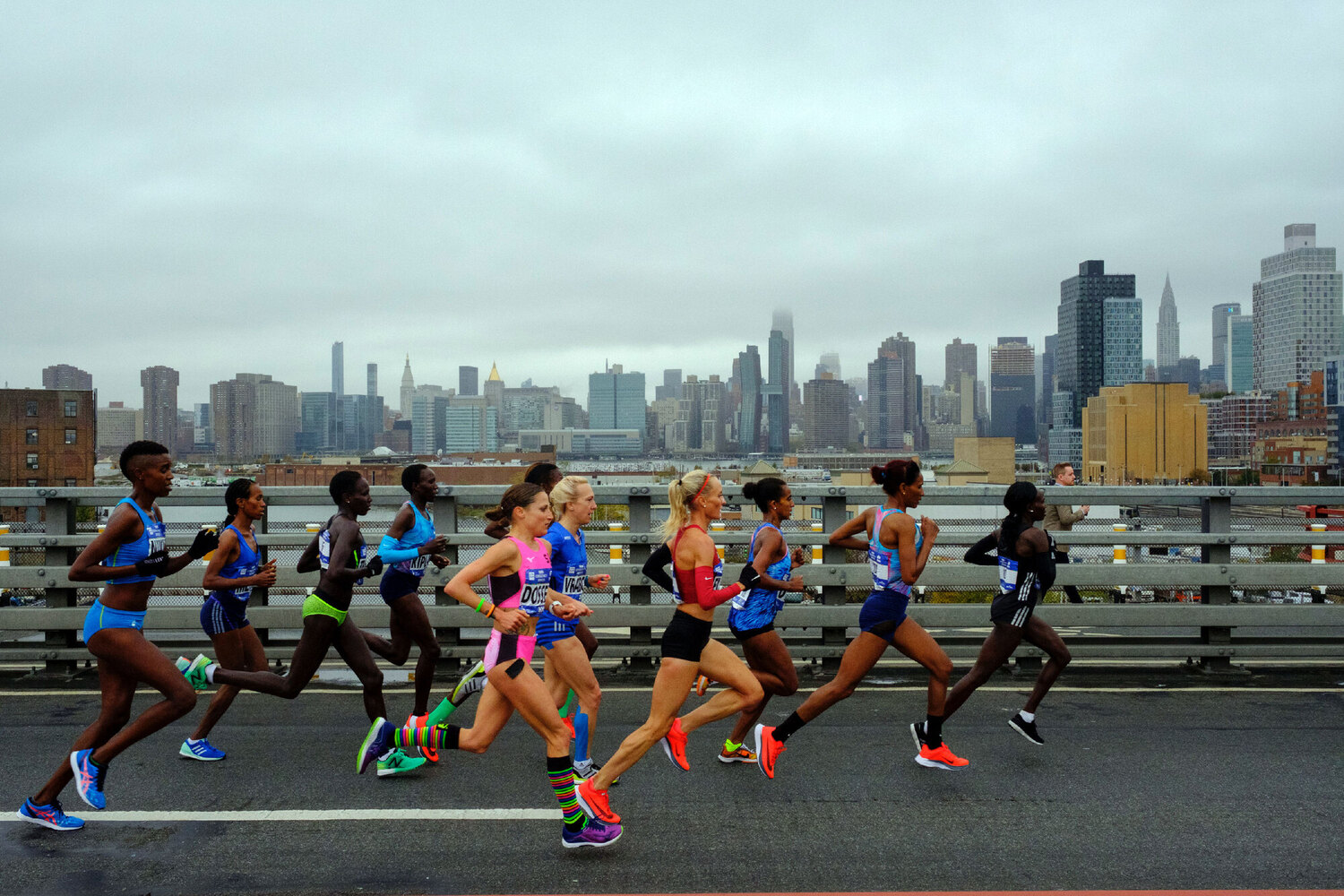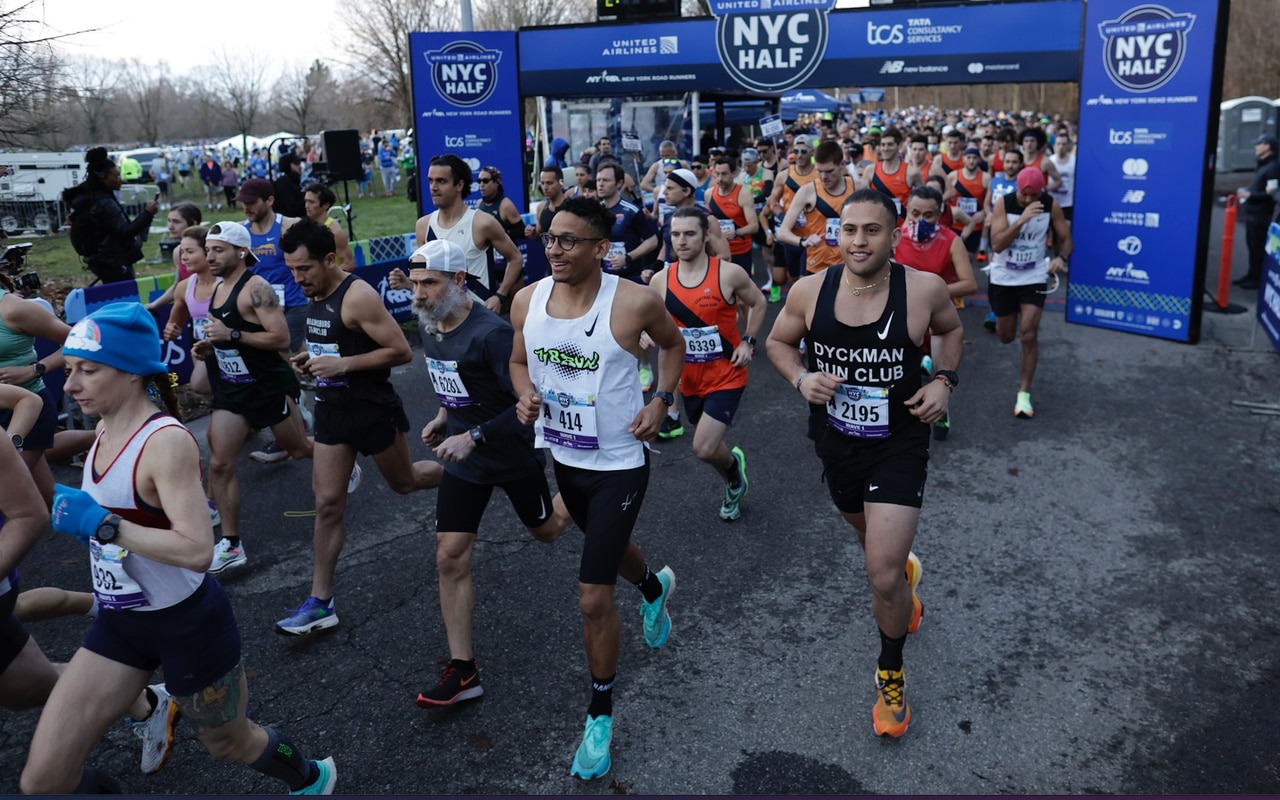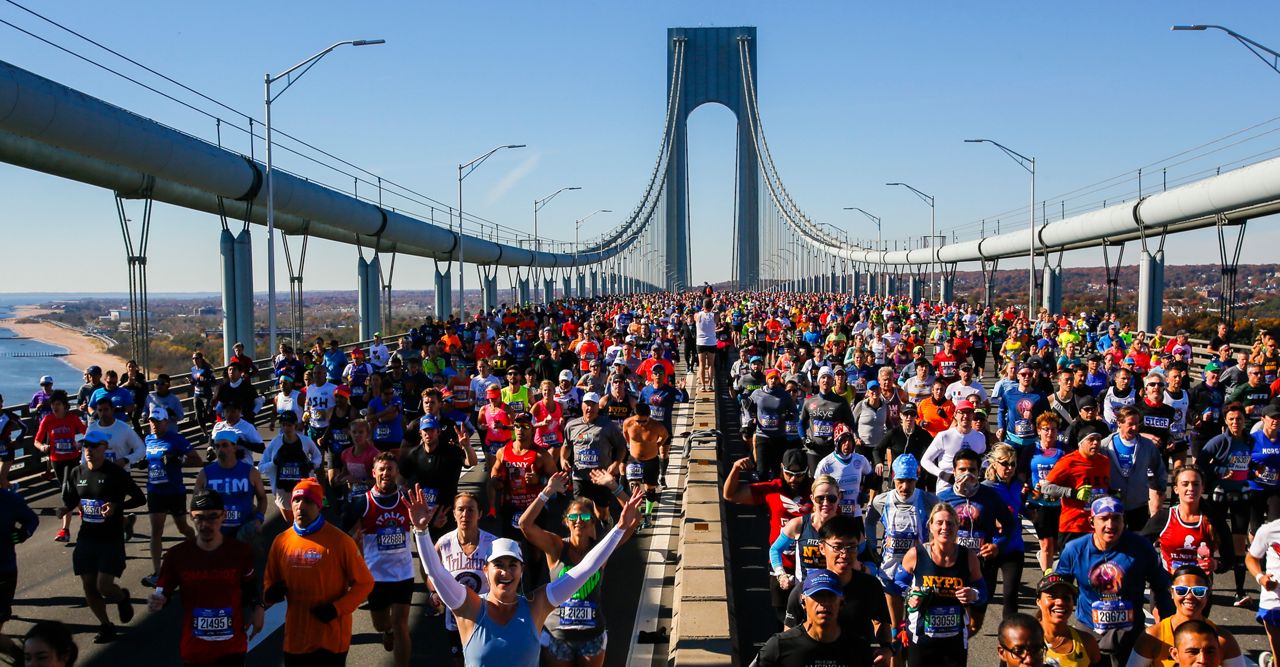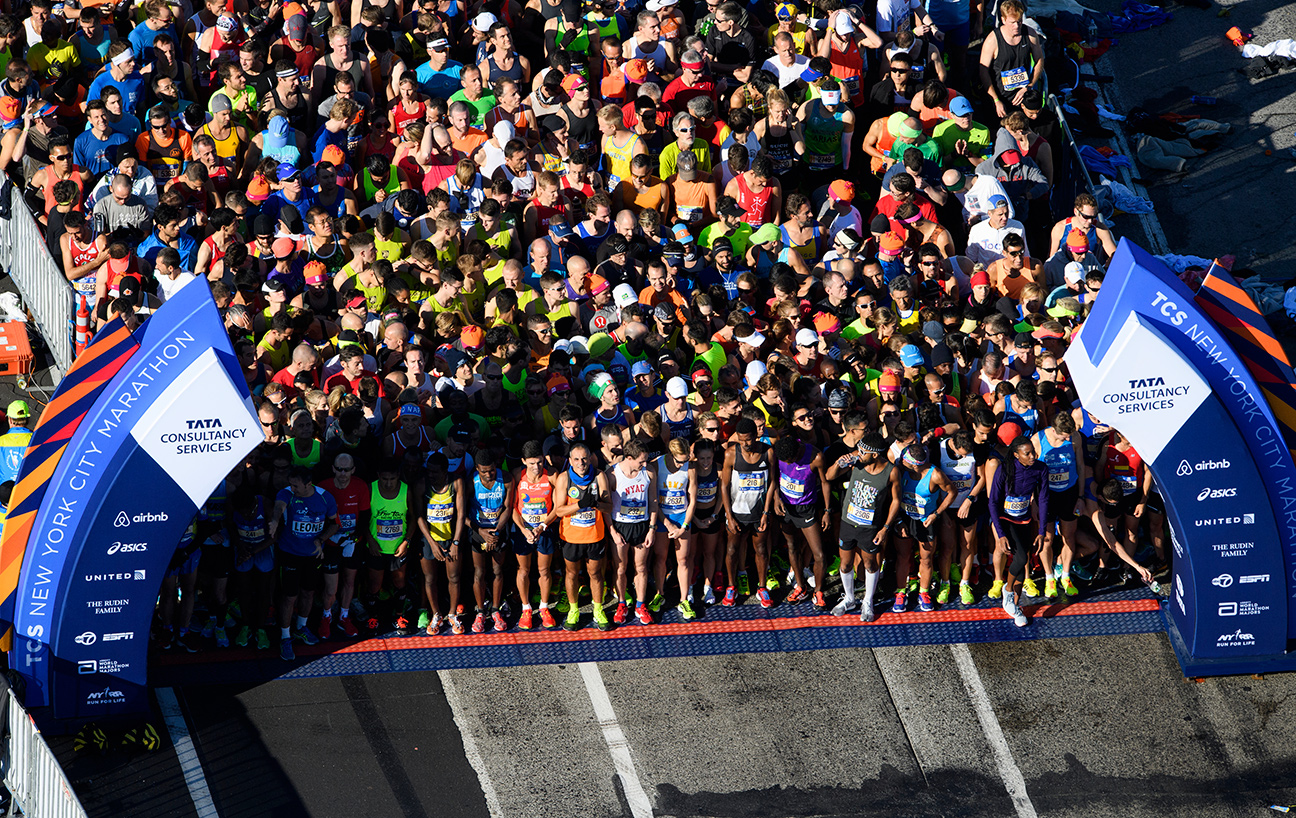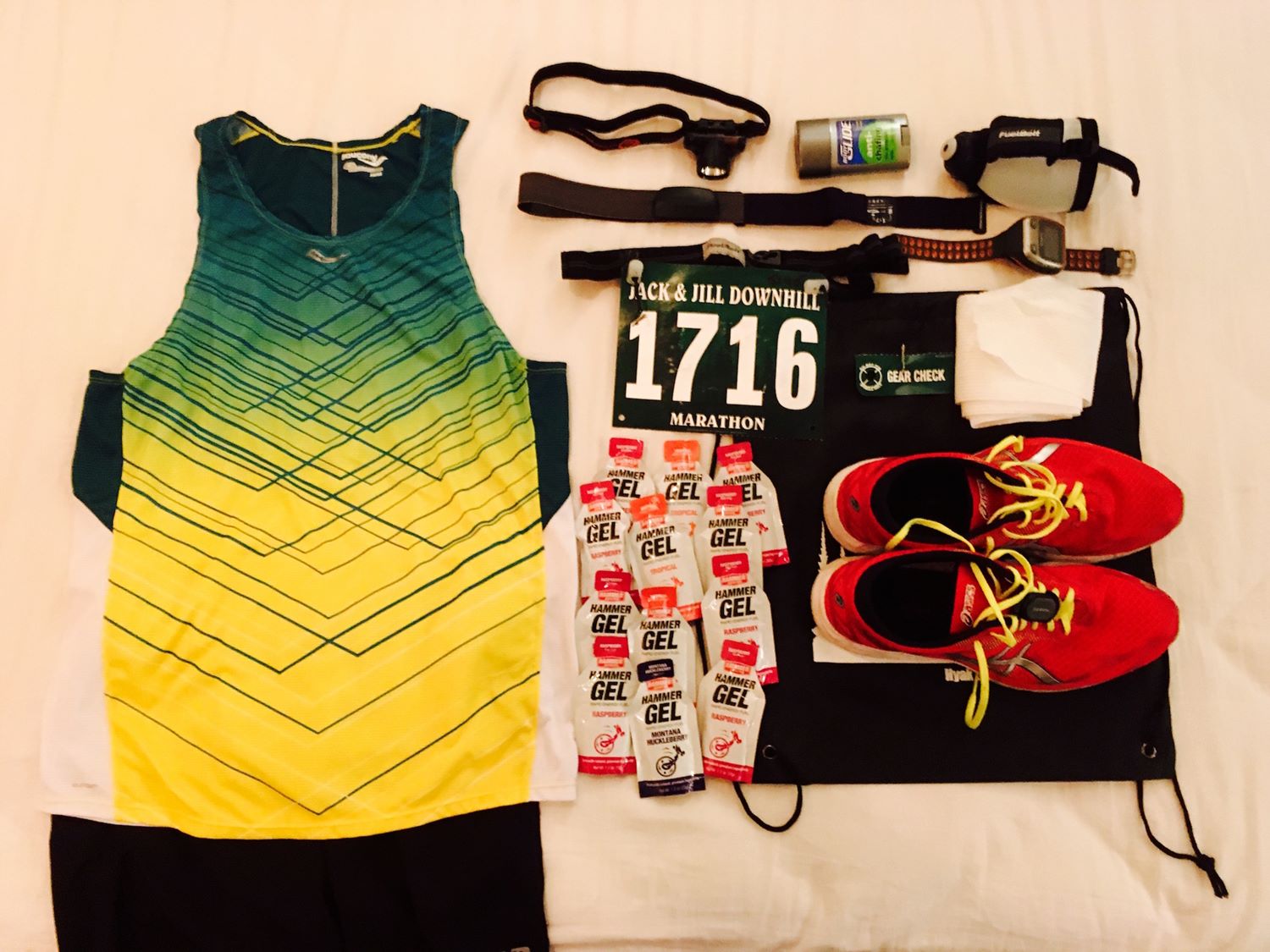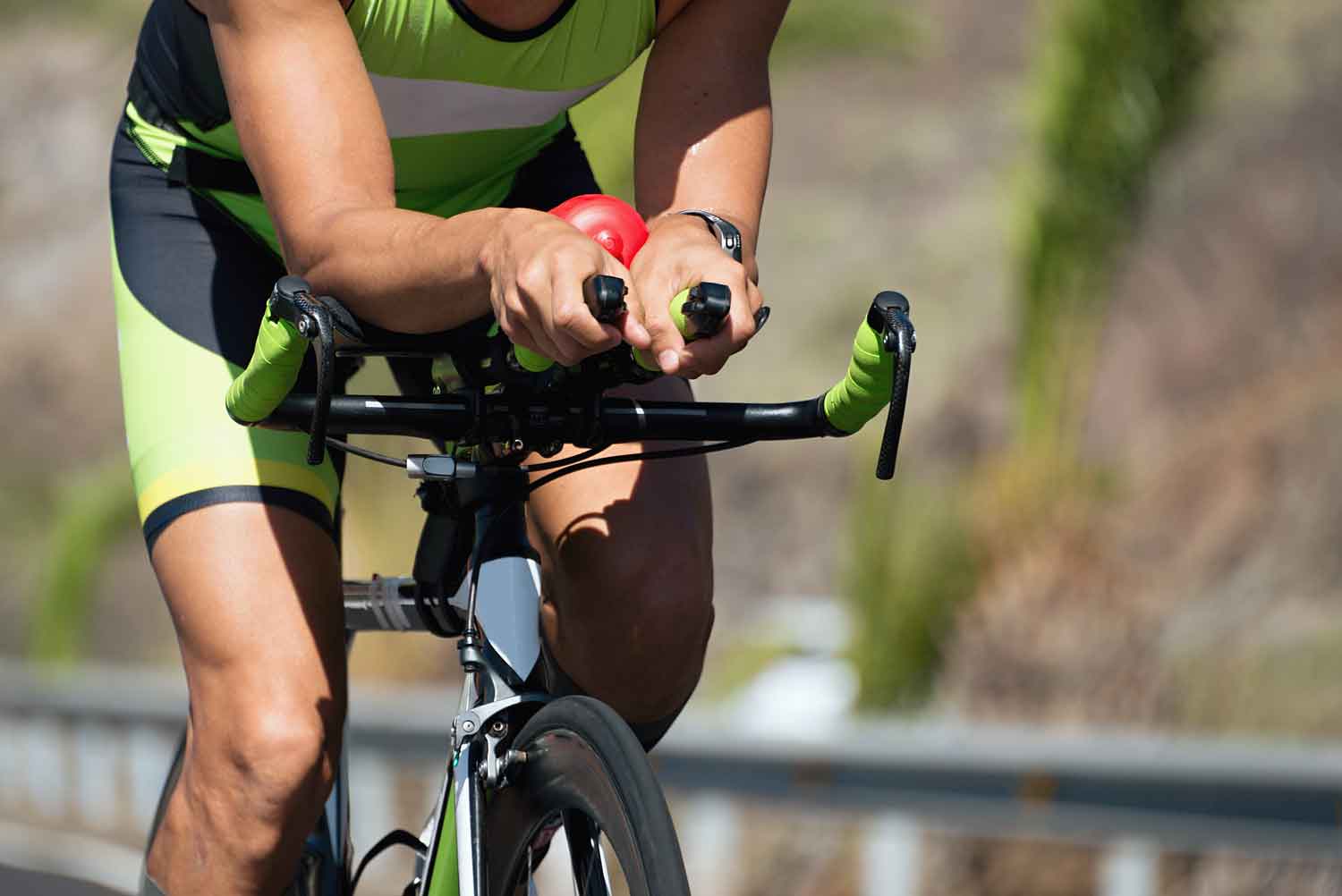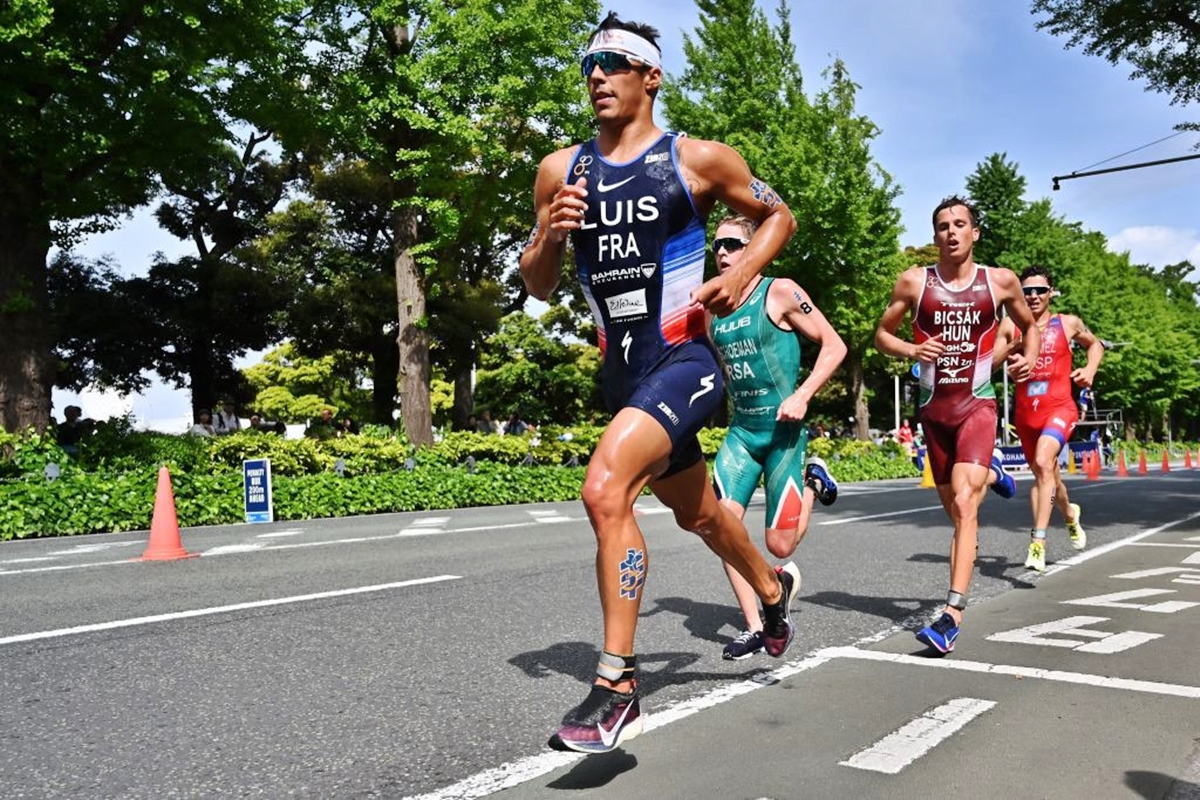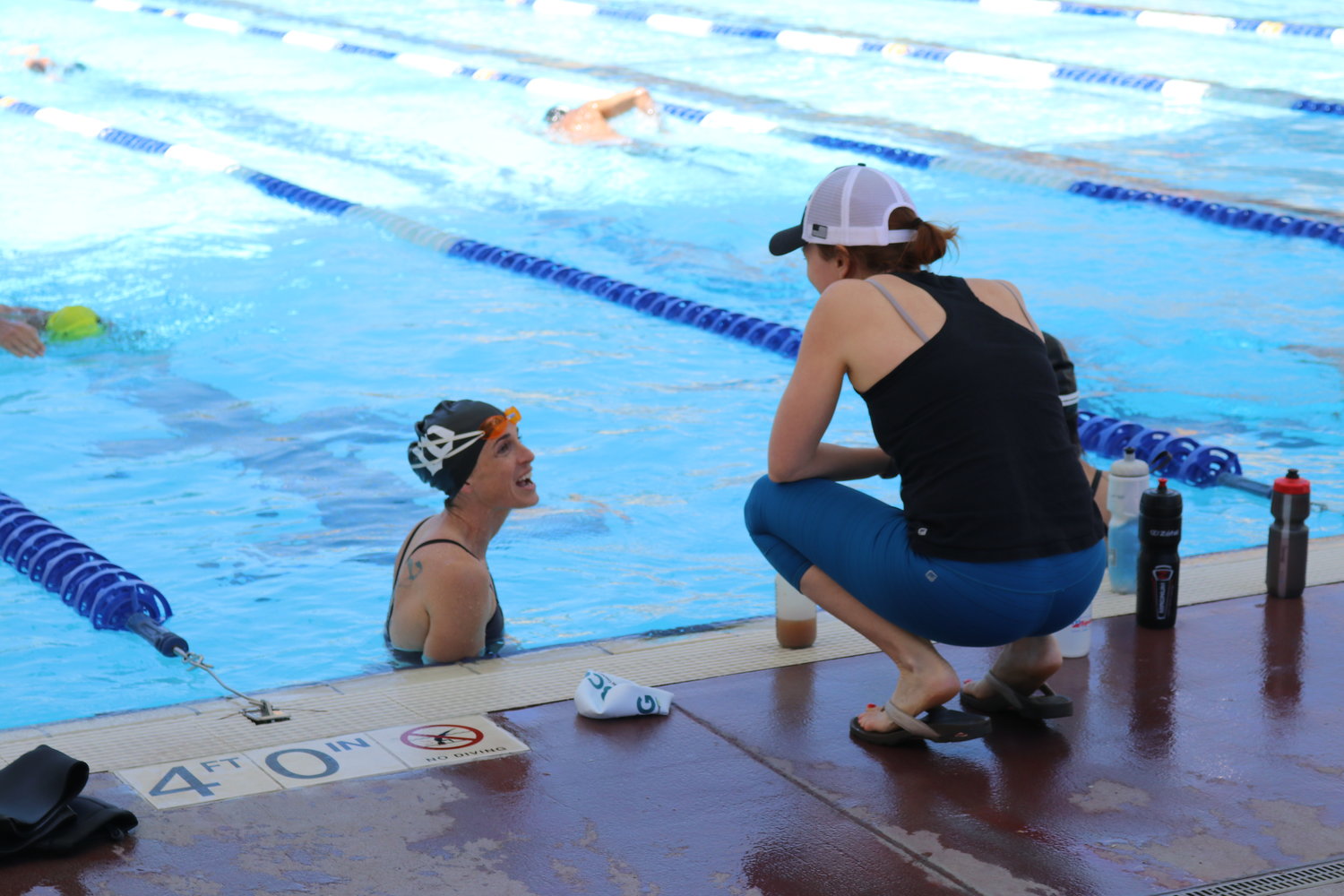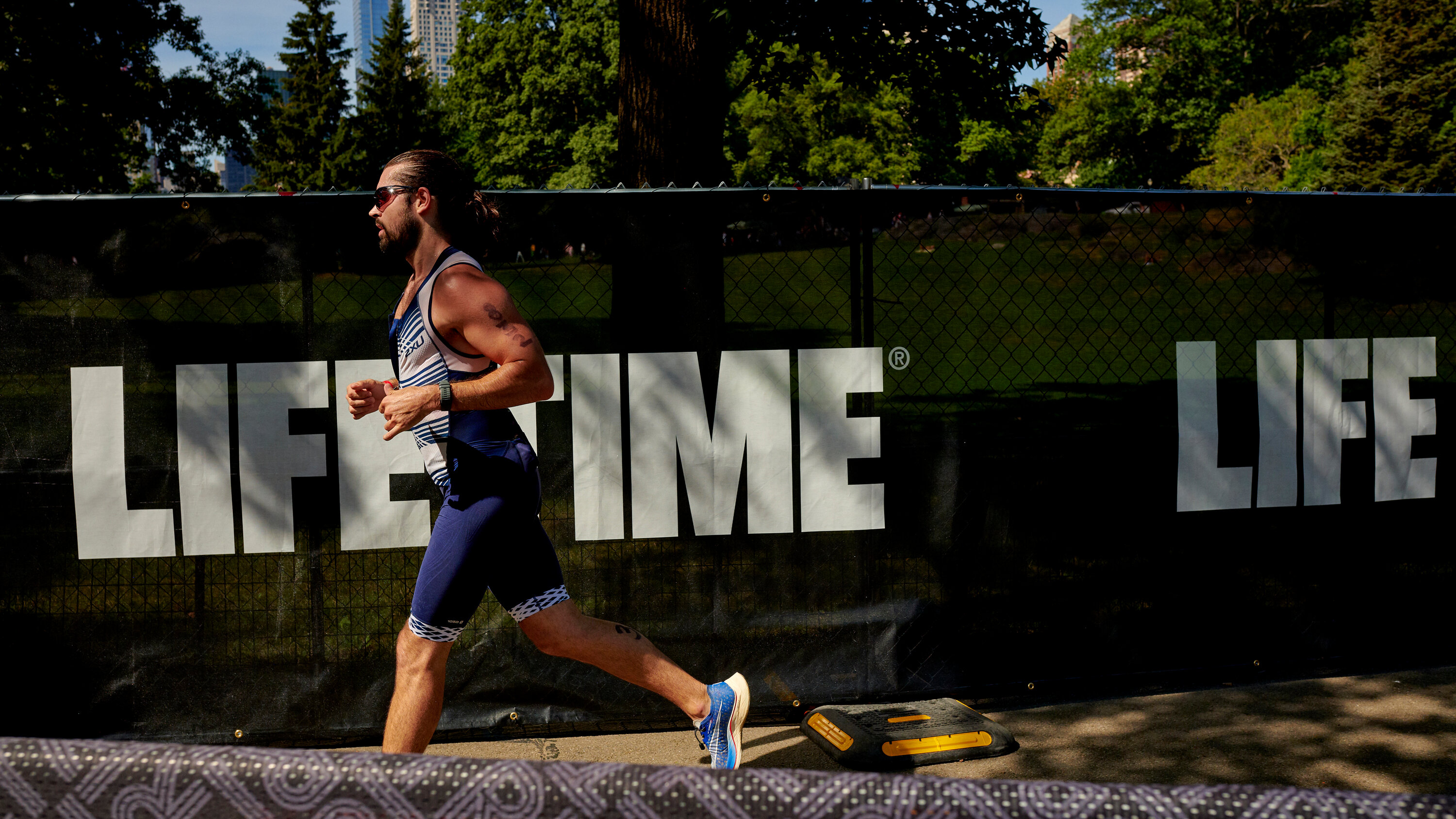

Featured
How To Train For A Triathlon In NYC
Modified: January 2, 2024
Looking for triathlon training in NYC? Discover expert tips and techniques to train effectively for a triathlon, brought to you by our featured specialists.
Introduction
Welcome to the bustling city of New York, where the concrete jungle meets the world of triathlon training. Training for a triathlon in NYC comes with its own unique challenges and benefits. With its diverse terrain, iconic landmarks, and endless opportunities for swimming, cycling, and running, NYC provides a dynamic backdrop for athletes of all levels to train and prepare for their upcoming triathlon.
Whether you’re a seasoned triathlete looking for new training grounds or a beginner eager to embark on your first triathlon journey, this article will guide you through the process of training for a triathlon in NYC. From finding the right training locations to setting realistic goals, incorporating swim, bike, and run training, and accessing strength training, nutrition, and recovery options, we’ve got you covered.
Training for a triathlon requires a balanced approach that focuses on building endurance, strength, and mental resilience. It’s not just about pushing your physical limits, but also about finding ways to enjoy the process and stay motivated throughout your training journey.
So, whether you love gliding through the water, pedaling through the city streets, or pounding the pavement in the parks, get ready to dive into the world of triathlon training in the vibrant and energetic city of New York. Let’s explore the best training locations, techniques, and tips to help you achieve your triathlon goals and have a rewarding and memorable experience along the way.
Finding the Right Training Locations in NYC
One of the advantages of training for a triathlon in NYC is the multitude of training locations available to athletes. From the expansive Hudson River to the sprawling Central Park, there are plenty of options to choose from. Here are some key considerations when selecting the right training locations:
1. Swim: The Hudson River offers a unique swim experience for triathletes. The various swim docks and public pools along the river provide convenient access to open water swimming. For those seeking a controlled environment, there are also numerous indoor and outdoor pools throughout the city. Just be sure to check for any restrictions or permits required before diving in.
2. Bike: Cycling in NYC can be exhilarating and challenging. Central Park is a popular choice for cycling training, with its 6-mile loop offering a mix of rolling hills and flats. The park’s lower loop is closed to traffic during certain hours, providing a safe and scenic route for cyclists. Additionally, there are bike lanes throughout the city, allowing you to explore different neighborhoods and iconic landmarks on two wheels.
3. Run: Whether you prefer the energy of the city streets or the tranquility of parks, NYC has plenty to offer for running. Central Park is a favorite among runners, with its diverse terrain and picturesque views. Riverside Park along the Hudson River also provides a serene running path. For a unique experience, you can venture out to the boardwalk of Coney Island or the trails of Van Cortlandt Park.
4. Facilities: In addition to outdoor training locations, NYC is home to various fitness clubs and training centers equipped with state-of-the-art facilities. These facilities often offer specialized training programs, group classes, and access to trainers who can help you fine-tune your training regimen.
5. Safety: When training in NYC, it’s important to prioritize safety. Stay aware of your surroundings, especially when cycling on busy streets. Wear reflective gear, obey traffic rules, and consider joining group rides for added safety. If you’re swimming in open water, be mindful of currents and tides, and swim with a buddy whenever possible.
Whether you choose to train in the heart of Manhattan or explore the outer boroughs, NYC offers a diverse range of training locations to suit every triathlete’s needs. Take advantage of these unique settings to enhance your training experience and prepare for a successful triathlon.
Setting Realistic Goals and Creating a Training Schedule
Setting realistic goals is essential when training for a triathlon in NYC. Your goals should be specific, measurable, attainable, relevant, and time-bound (SMART) to keep you motivated and focused throughout your training journey. Here are some tips to help you set and achieve your goals:
1. Assess Your Current Fitness Level: Before you start training, it’s important to have a baseline understanding of your current fitness level. Evaluate your strengths and weaknesses in swimming, cycling, and running. This self-assessment will help you set realistic goals for each discipline.
2. Define Your Triathlon Distance: Triathlon distances vary, ranging from sprint to Ironman. Determine the distance you want to compete in and tailor your goals accordingly. Each distance requires different training intensities and time commitments.
3. Break Down Your Goals: Divide your triathlon training into smaller, manageable milestones. This approach helps you stay focused and motivated throughout the training process. For example, set goals for increasing your weekly mileage or improving your swimming technique.
4. Consider Time Constraints: Take into account your daily schedule and commitments when creating a training schedule. Be realistic about how much time you can dedicate to training each week. Consistency is key, so aim for a schedule that you can realistically stick to.
5. Mix Up Your Training: To prevent burnout and injury, create a well-rounded training schedule that incorporates swim, bike, and run sessions along with rest days. Varying your workouts not only helps you improve in each discipline but also keeps your training engaging and enjoyable.
6. Gradually Increase Intensity: As you progress in your training, gradually increase the intensity and duration of your workouts. Avoid sudden jumps in training volume, as this can lead to overuse injuries. Gradual progression allows your body to adapt and helps you build endurance safely.
7. Listen to Your Body: Pay attention to your body’s signals and adjust your training schedule accordingly. If you’re feeling fatigued or experiencing pain, allow yourself extra rest and recovery time. Pushing through injuries can derail your progress and hinder your performance on race day.
8. Seek Guidance: Consider working with a coach or joining a triathlon training program in NYC. A qualified coach can help you set realistic goals, create a personalized training plan, and provide guidance on technique, nutrition, and recovery.
By setting realistic goals and creating a well-structured training schedule, you’ll be on your way to achieving success in your triathlon journey. Remember, consistency, patience, and perseverance are key ingredients to reaching your full potential.
Incorporating Swim Training in NYC
When training for a triathlon in NYC, incorporating swim training is crucial to improving your overall performance. While swimming in the open water of the Hudson River can be an exhilarating experience, there are also plenty of other options available for swim training in the city. Here are some tips for incorporating swim training into your triathlon preparation:
1. Open Water Swimming: The Hudson River offers a unique opportunity for open water swimming. There are designated swim docks and areas along the river where you can safely practice your open water swimming skills. Be sure to check the current conditions and follow safety guidelines provided by local authorities and swimming organizations.
2. Indoor Pools: NYC is home to numerous indoor pools that provide a controlled environment for swim training. Many of these pools offer lap swim sessions and swim lessons for all skill levels. Utilize these facilities to focus on improving your stroke technique, endurance, and speed.
3. Group Swim Sessions: Joining a group swim session or Masters swimming program can provide a supportive and motivating environment for your swim training. These sessions are often led by experienced coaches who can provide guidance on technique and help you push your limits in the water.
4. Swim Drills: Incorporate swim drills into your training routine to improve specific aspects of your technique. Drills such as kickboard exercises, single-arm drills, and bilateral breathing can help you develop a stronger and more efficient swimming stroke. Work with a coach or seek online resources for a variety of swim drills to target different areas of your technique.
5. Technique Focus: Pay attention to your swimming technique and work on refining it throughout your training. Focus on aspects such as body position, catch and pull, breathing technique, and kick. A well-executed and efficient swimming technique will not only improve your swim speed but also conserve energy for the rest of the race.
6. Simulated Open Water Sessions: While swimming in a pool is valuable for technique and endurance, it’s important to simulate open water swimming conditions as well. Seek out opportunities to practice in open water, such as participating in organized open water swim events or finding locations with similar conditions to your race course.
7. Cross-Training: Incorporating cross-training exercises can enhance your swim training. Activities such as yoga, Pilates, and strength training can improve your overall fitness, flexibility, and core strength, which are crucial for efficient swimming.
Swim training is an integral part of your triathlon preparation. By utilizing the diverse swim training options available in NYC, focusing on technique, and incorporating open water practice, you’ll be well-prepared to tackle the swim leg of your triathlon with confidence.
Cycling Routes and Tips in NYC
Cycling in the vibrant city of New York offers a unique and thrilling experience for triathletes. With a mix of urban landscapes, scenic parks, and dedicated bike lanes, NYC provides a multitude of cycling routes to suit every rider’s preferences. Here are some cycling routes and tips to make the most of your training in the city:
1. Central Park Loop: The Central Park loop is a go-to route for cyclists in NYC. Its 6.1-mile loop offers a mix of flats and rolling hills, providing a challenging yet rewarding ride. The park is closed to traffic during certain hours, ensuring a safer riding environment. However, be mindful of pedestrians and other cyclists, especially during peak hours.
2. Hudson River Greenway: Stretching along the western edge of Manhattan, the Hudson River Greenway provides a scenic cycling route with breathtaking views of the river and the city skyline. This car-free path allows for uninterrupted cycling and connects various neighborhoods and parks, such as Battery Park City, Riverside Park, and the West Side Highway Bike Path.
3. Brooklyn Bridge: Cycling across the iconic Brooklyn Bridge offers a memorable experience for triathletes. Take in the stunning views of the Manhattan skyline as you ride across the bridge into the borough of Brooklyn. Once in Brooklyn, explore the neighborhoods of DUMBO, Brooklyn Heights, and Prospect Park for additional riding opportunities.
4. Belt Parkway Greenway: For longer rides and more open spaces, the Belt Parkway Greenway is a great option. This route follows the shoreline of Brooklyn and Queens, offering panoramic views of the water and ample opportunities for longer, endurance-building rides. Be aware of vehicular traffic, as sections of the route are shared with cars.
5. Bike Lanes and Bike-friendly Streets: NYC is continuously expanding its network of bike lanes, making it easier and safer for cyclists to navigate the city. Familiarize yourself with bike-friendly streets and dedicated bike lanes near your training locations. Utilize bike maps and apps to find the most efficient and bike-friendly routes for your training rides.
6. Group Rides: Joining a group ride is a great way to connect with fellow cyclists and enjoy a structured and supportive training session. NYC has many cycling clubs and groups that organize regular rides catering to different skill levels. Participating in group rides not only adds a social aspect to your training but also helps you improve your cycling skills and build confidence on the road.
7. Safety Tips: When cycling in NYC, it’s essential to prioritize safety. Always wear a helmet and use appropriate signaling when turning or stopping. Obey traffic rules and be aware of your surroundings. Stay visible by wearing reflective gear and using lights when riding during low-light conditions. Be cautious when riding alongside parked cars and watch out for opening doors.
Incorporate these cycling routes and tips into your training regimen to make the most of your cycling sessions in NYC. Whether you’re exploring the iconic landmarks or tackling the city’s challenging hills, cycling in NYC offers an exciting and dynamic training experience for triathletes.
Running Routes and Techniques in NYC
Running in the energetic city of New York is a fantastic way to train for a triathlon. With its diverse terrain, iconic landmarks, and abundant parks, NYC offers a plethora of running routes to suit every runner’s preferences. Whether you enjoy pounding the pavement or prefer the tranquility of park trails, here are some running routes and techniques to enhance your training in the city:
1. Central Park: Central Park is a runner’s oasis in the heart of Manhattan. With its 6-mile loop, rolling hills, and scenic views, it provides a challenging yet beautiful running route. You can vary your distance by looping the park multiple times or exploring the various paths and trails within. The park also offers water fountains and restrooms for convenience during your long runs.
2. Hudson River Park: The Hudson River Park offers a picturesque waterfront running route along the west side of Manhattan. This flat and uninterrupted path allows runners to enjoy stunning views of the river and the city skyline as they log their miles. You can start from Battery Park and run north along the river, passing various piers and parks along the way.
3. Prospect Park: Located in Brooklyn, Prospect Park is a runner’s haven with its 3.35-mile loop and diverse trail options. The park features rolling hills, tree-lined paths, and a car-free loop on weekends, providing a peaceful and scenic environment for your training runs. Make use of the park’s water fountains and restrooms, as well as its various offshoot trails for added mileage.
4. Brooklyn Bridge Park: For a unique and waterfront running experience, explore Brooklyn Bridge Park. This park stretches along the East River and offers stunning views of Manhattan as you run along its promenade. The various paths and loops within the park allow you to customize your distance while enjoying the refreshing breeze and vibrant atmosphere.
5. High Line: The High Line is a repurposed elevated railway track turned urban park. This linear park offers a one-of-a-kind running route with its elevated views, beautiful gardens, and art installations. While the path is shorter than other routes, incorporating it into your run allows for variety and a unique perspective of the city.
6. Interval Training: Incorporating interval training can help improve your speed and endurance. Utilize landmarks such as lampposts or benches as markers for your intervals. Alternate between periods of high-intensity running and recovery intervals to challenge yourself and improve your overall performance.
7. Hill Training: NYC has its fair share of hills that can provide an excellent opportunity for hill training. Target hills such as the ones in Central Park or utilize bridges like the Manhattan or Brooklyn Bridge for hill repeats. Incorporating hill workouts into your training will strengthen your leg muscles and improve your overall running ability.
With the wide range of running routes and various training techniques available in NYC, you’ll never have a dull moment during your triathlon training. Explore the city’s parks, embrace its urban landscapes, and adopt running techniques that challenge and inspire you. Lace up your running shoes, hit the pavement, and enjoy every step of your training journey.
Strength Training and Cross-Training Options in NYC
Strength training and cross-training are essential components of a well-rounded triathlon training program. Building strength and working on different muscle groups not only improves your overall performance but also helps prevent injuries. Luckily, in the city that never sleeps, there are plenty of options for strength training and cross-training in NYC. Here are some of the best options:
1. Fitness Centers and Gyms: NYC is home to a vast array of fitness centers and gyms that offer state-of-the-art facilities and a variety of strength training equipment. These facilities often provide a range of strength training machines, free weights, and functional training areas. Joining a fitness center or gym gives you access to diverse strength training options and opportunities to work with qualified trainers who can guide you through proper form and technique.
2. Boutique Fitness Studios: NYC is renowned for its boutique fitness studio scene, which offers specialized and unique workout experiences. Many of these studios incorporate strength training elements into their classes, such as kettlebell workouts, circuit training, TRX suspension training, and high-intensity interval training (HIIT). Explore options like Barry’s Bootcamp, Fhitting Room, and Tone House to mix up your training routine and challenge your muscles in new ways.
3. Outdoor Fitness Equipment: NYC parks are equipped with outdoor fitness equipment, providing a free and convenient option for strength training. Locations like Tompkins Square Park, Hudson River Park, and McCarren Park have designated fitness areas with equipment such as pull-up bars, parallel bars, and much more. These outdoor fitness setups allow you to enjoy the fresh air while working on your strength and endurance.
4. Yoga and Pilates Studios: Incorporating yoga and Pilates into your training routine can improve flexibility, core strength, and overall body awareness. NYC is home to numerous yoga and Pilates studios that offer a wide range of classes, from gentle stretching to dynamic flow sequences and reformer Pilates. Take advantage of these classes to enhance your strength, balance, and mind-body connection.
5. Other Cross-Training Activities: NYC offers endless opportunities for cross-training activities to complement your triathlon training. Explore options such as indoor rock climbing at Brooklyn Boulders, rowing classes at Row House, or indoor cycling classes at SoulCycle. Diversifying your workouts not only helps prevent boredom but also provides a well-rounded fitness foundation.
6. Personal Training and Small Group Sessions: If you prefer personalized attention and guidance, consider working with a personal trainer or joining small group training sessions. These sessions can be tailored to your specific needs and provide focused strength training routines that complement your triathlon goals.
Remember to prioritize rest and recovery days in your training schedule to allow your body to adapt and rebuild. Incorporating strength training and cross-training into your triathlon preparation improves your overall fitness, reduces the risk of injury, and enhances your performance in the swim, bike, and run disciplines.
Nutrition and Hydration for Triathlon Training
Proper nutrition and hydration are key components of successful triathlon training. Fueling your body with the right nutrients and maintaining adequate hydration levels are essential for optimizing performance, enhancing recovery, and preventing fatigue. In the bustling city of New York, there are plenty of options and resources to support healthy eating and hydration during your triathlon training. Here are some guidelines to help you make the most of your nutrition and hydration:
1. Balanced Diet: Focus on maintaining a balanced diet that includes a variety of whole foods. Prioritize lean proteins, complex carbohydrates, healthy fats, and plenty of fruits and vegetables. These provide essential nutrients for energy production, muscle repair, and overall health.
2. Meal Planning: Plan your meals and snacks in advance to ensure you are meeting your nutritional needs. Aim for a combination of carbohydrates and protein before and after training sessions for adequate fuel and recovery. Consider batch-cooking and meal prepping to save time and ensure you have nutritious meals readily available.
3. Hydration: Stay hydrated throughout your training by drinking water regularly. As a triathlete, you may need to replace not only water but also electrolytes lost through sweat during training. Utilize electrolyte-rich drinks or consider adding electrolyte tablets to your water to maintain proper hydration levels.
4. Sports Nutrition Products: Explore sports nutrition products such as energy gels, bars, and drinks that can provide quick and easily digestible fuel during your long training sessions or races. Experiment with different products during training to find ones that work best for you in terms of taste, digestibility, and energy replenishment.
5. Pre- and Post-Training Nutrition: Before training sessions, aim for a balanced meal or snack that includes carbohydrates for energy and a small amount of protein for muscle repair. After training, prioritize consuming carbohydrates and protein within the first 30 minutes to optimize glycogen replenishment and muscle recovery.
6. Healthy Snacking: Incorporate healthy snacks throughout the day to support your energy levels and muscle recovery. Opt for options such as nuts, seeds, yogurt, fruit, or granola bars to keep you fueled between meals.
7. NYC Farmers’ Markets and Grocery Stores: Take advantage of the abundant farmers’ markets and grocery stores in NYC to access fresh, local, and seasonal produce. These markets often offer a wide selection of fruits, vegetables, and other nutritious options to support your training diet.
8. Consult a Registered Dietitian: For personalized nutrition guidance, consider consulting with a registered dietitian who specializes in sports nutrition. They can provide individualized recommendations based on your training intensity, goals, and any specific dietary requirements or restrictions you may have.
Remember, nutrition and hydration are individual, and what works for one athlete may not work for another. It’s important to experiment, listen to your body, and make adjustments based on your specific needs and preferences. By fueling your body with the right nutrients and staying properly hydrated, you’ll be equipped to take on the challenges of your triathlon training with energy and vitality.
Recovery and Injury Prevention Strategies
Recovery and injury prevention are vital aspects of any triathlon training program. The high demands of swim, bike, and run workouts can put stress on your body, increasing the risk of overuse injuries and fatigue. In the bustling city of New York, there are numerous strategies and resources available to aid in recovery and minimize the risk of injuries. Here are some strategies to help you optimize your recovery and prevent injuries:
1. Rest and Sleep: Prioritize rest and quality sleep to allow your body to recover and repair. Aim for 7-9 hours of uninterrupted sleep each night. Naps can also be beneficial for aiding in muscle recovery and reducing fatigue.
2. Active Recovery: Schedule active recovery days into your training program. Engage in low-impact activities such as walking, swimming, or cycling at an easy pace to promote blood circulation and flush out metabolic waste products from your muscles.
3. Stretching and Flexibility: Incorporate regular stretching sessions to improve flexibility and maintain a healthy range of motion in your joints. Focus on areas that tend to be tight, such as the hips, hamstrings, quads, and calves. Consider adding yoga or Pilates classes to your routine for a dynamic approach to stretching and mobility.
4. Massage Therapy: NYC offers a range of massage therapy options that can aid in muscle recovery and relaxation. Consider incorporating regular sports massages into your training program to manage muscle soreness, increase blood flow, and alleviate tension.
5. Foam Rolling and Self-Myofascial Release: Foam rolling and using self-myofascial release techniques can help break up muscle knots and adhesions, improve circulation, and reduce muscle tension. Make use of foam rollers, massage balls, and other self-massage tools to target specific areas of tightness or discomfort.
6. Cross-Training: Engaging in activities other than swimming, cycling, and running can help prevent overuse injuries and provide a mental break from your training. Activities like yoga, Pilates, strength training, and even recreational sports offer different movement patterns and challenges for your body.
7. Proper Nutrition: Fuel your body with a balanced diet that includes macronutrients, vitamins, and minerals essential for recovery. Adequate protein intake supports muscle repair, while carbohydrates replenish glycogen stores. Hydrate well and include anti-inflammatory foods in your diet, such as foods rich in omega-3 fatty acids and antioxidants.
8. Listen to Your Body: Pay attention to any signs of potential injury or fatigue. Listen to your body’s cues and adjust your training intensity, volume, or schedule accordingly. Pushing through pain or ignoring warning signs can lead to more serious injuries and setbacks.
9. Seek Professional Advice: Consult with a sports medicine physician, physical therapist, or other qualified professionals if you have concerns about a specific injury or need guidance on injury prevention strategies tailored to your needs. They can provide individualized advice and treatment options to support your training and recovery.
By prioritizing recovery and implementing injury prevention strategies, you can ensure your body remains strong, resilient, and ready for the challenges of triathlon training in the vibrant city of New York.
Mental Preparation and Race Day Tips
Mental preparation is just as important as physical training when it comes to triathlon success. Your mindset and mental resilience play a crucial role in overcoming challenges and performing your best on race day. In the bustling city of New York, where the atmosphere is exhilarating and the competition is fierce, it’s essential to cultivate a positive and focused mindset. Here are some mental preparation and race day tips to help you perform at your peak:
1. Visualize Success: Incorporate visualization exercises into your training routine. Imagine yourself successfully completing each leg of the triathlon and crossing the finish line with a sense of accomplishment. Visualizing success helps build confidence and mentally prepares you for the race ahead.
2. Practice Mental Toughness: During your training, intentionally put yourself in challenging situations to develop mental toughness. Push through discomfort, fatigue, and self-doubt. With each successful overcoming of mental hurdles, your resilience and confidence will grow.
3. Set Realistic Expectations: While it’s important to have goals, it’s equally important to set realistic expectations for yourself. Understand that every race is different, and unforeseen factors may impact your performance. Focus on giving your best effort and enjoying the experience rather than fixating solely on outcome-based goals.
4. Break the Race into Smaller Segments: Rather than overwhelming yourself with the entire race distance, break it down into smaller, manageable segments. Focus on one leg at a time or set smaller goals within each leg. This mental approach allows you to stay present, maintain focus, and avoid becoming overwhelmed.
5. Develop Positive Self-Talk: Train yourself to use positive self-talk during both training and the race. Replace negative thoughts with affirmations and encouraging words. Use phrases such as “I am strong,” “I can do this,” and “I am capable.” Positive self-talk boosts confidence and helps you overcome obstacles.
6. Create a Race Day Plan: Plan out your race day logistics in advance to reduce stress and uncertainty. Familiarize yourself with the course layout, transition areas, and aid stations. Develop a race day timeline, including when to arrive, warm-up, and start each leg. Having a plan in place helps you feel prepared and in control on race day.
7. Stay Present and Focus on Yourself: During the race, focus on your own performance and progress rather than comparing yourself to others. Stay present in the moment, concentrating on your own technique, breathing, and pacing. This mindset keeps you in control and minimizes distractions.
8. Embrace the Energy of NYC: The vibrant atmosphere of NYC can provide an incredible source of motivation and energy on race day. Embrace the cheers from spectators, draw inspiration from the bustling streets, and let the city’s energy fuel your determination to succeed.
9. Practice Deep Breathing and Relaxation Techniques: Incorporate deep breathing and relaxation techniques into your race day preparations. These techniques help calm your mind, reduce pre-race jitters, and keep your body relaxed and focused during the race.
Mental preparation is a vital aspect of triathlon training and racing. By adopting a positive mindset, developing mental resilience, and implementing these race day tips, you’ll not only enjoy the journey but also perform to the best of your abilities in the electrifying city of New York.
Conclusion
Congratulations! You have reached the end of our comprehensive guide to training for a triathlon in the bustling city of New York. We have covered a wide range of topics, including finding the right training locations, setting realistic goals, swim training, cycling routes and tips, running routes and techniques, strength training and cross-training options, nutrition and hydration, recovery and injury prevention strategies, as well as mental preparation and race day tips.
Training for a triathlon in NYC presents its own unique set of challenges and opportunities. The city offers a diverse range of training locations, iconic landmarks to explore, and a vibrant and energetic atmosphere that can inspire and motivate you throughout your training journey.
Remember to find the right training locations that suit your preferences and take advantage of the city’s swimming docks, bike lanes, and running routes. Set realistic goals and create a training schedule that fits your lifestyle and allows for gradual progression.
Incorporate swim training in the Hudson River or at various indoor pools, explore cycling routes in Central Park, the Hudson River Greenway, and other scenic areas, and take advantage of running routes in Central Park, along the Hudson River, or in Brooklyn Bridge Park.
Don’t overlook the importance of strength training and cross-training options, such as boutique fitness studios, outdoor fitness equipment, yoga and Pilates studios, and other activities that can enhance your overall fitness and prevent injuries.
Ensure you fuel your body with proper nutrition and stay hydrated throughout your training. Prioritize recovery and injury prevention strategies to keep your body strong and resilient. Develop mental toughness, practice visualization, and employ race day tips to perform at your best on the big day.
Remember, the journey to a triathlon is not just about the race itself, but also about the process of training, self-improvement, and enjoying the experience. Embrace the energy and opportunities that the vibrant city of New York offers, and make each step of your triathlon training a rewarding and memorable one.
Now it’s time to put these tips into action. Lace up your shoes, dive into the Hudson River, hop on your bike, and let the streets of New York City become your training ground. Good luck on your triathlon journey!
